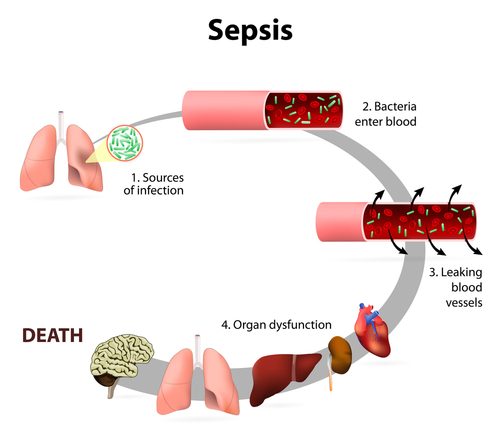Fixing leaking capillaries
University of Helsinki Faculty of Medicine News Dec 08, 2017
Sepsis, previously known as blood poisoning, continues to be a common, occasionally lethal disease, which is primarily associated with the breakdown of blood vessel walls. Associate professor Pipsa Saharinen hopes to create a method which would keep the blood vessel walls intact and blood where it belongs. The European Research Council has granted Saharinen’s ANTILEAK project a five-year €2-million ERC Consolidator Grant.

The central factor in sepsis, and particularly its more severe form, septic shock, is the breakdown of the walls in the capillary vessels, which leads to fluid oozing into the tissue. The increased permeability of capillary walls is also associated with many other common diseases. The blood vessels of cancer tumours are also permeable, which makes drugs less effective in cancerous tissue.
Associate professor Pipsa Saharinen has concentrated on examining the molecular mechanisms that regulate the permeability of blood vessel walls, and her team has now made a significant discovery: “We’ve identified what may be a key mechanism in the chain of events that results in excessive vascular permeability. With a precision treatment targeting this mechanism, we might be able to halt this detrimental process,” said Saharinen.
The European Research Council has granted Saharinen’s ANTILEAK project a five-year €2-million ERC Consolidator Grant.
There is tremendous need for a drug that could prevent blood vessel leakage.
“Illnesses associated with blood vessel leakage constitute a global health problem, afflicting tens of millions of people every year. These are also very serious illnesses,” Saharinen stated.
The growth factor known as angiopoietin-2, which regulates the generation of blood vessels, is known to also contribute to the regulation of the permeability of blood vessel walls. The Ang2 growth factor controls the cell functions through the Tie2 receptor.
However, Saharinen’s team have found another pathway in addition to the Tie2 channel, which allows Ang2 to send orders to the cell and trigger a process that may lead to blood vessel leakage.
As Ang2 is a key factor in the generation of blood vessels associated with cancer, it was identified as an important target for drug treatment already years ago, and drugs inhibiting its function are in clinical trials.
“At the moment, the drugs in the clinical trials only block the Tie2 signalling pathway, leaving the pathway we discovered open. This could explain why these drugs have not been as effective as could be expected,” said Saharinen.
Pipsa Saharinen hopes to develop antibodies that would allow the control of the signalling chains that regulate blood vessel walls to prevent them from becoming too permeable.
“It would be a major leap in the development of next-generation blood vessel medication.”
So far, it has been impossible to develop precision treatment of the “leaking” blood vessels, as there has been insufficient background information on the phenomenon.
-
Exclusive Write-ups & Webinars by KOLs
-
Daily Quiz by specialty
-
Paid Market Research Surveys
-
Case discussions, News & Journals' summaries